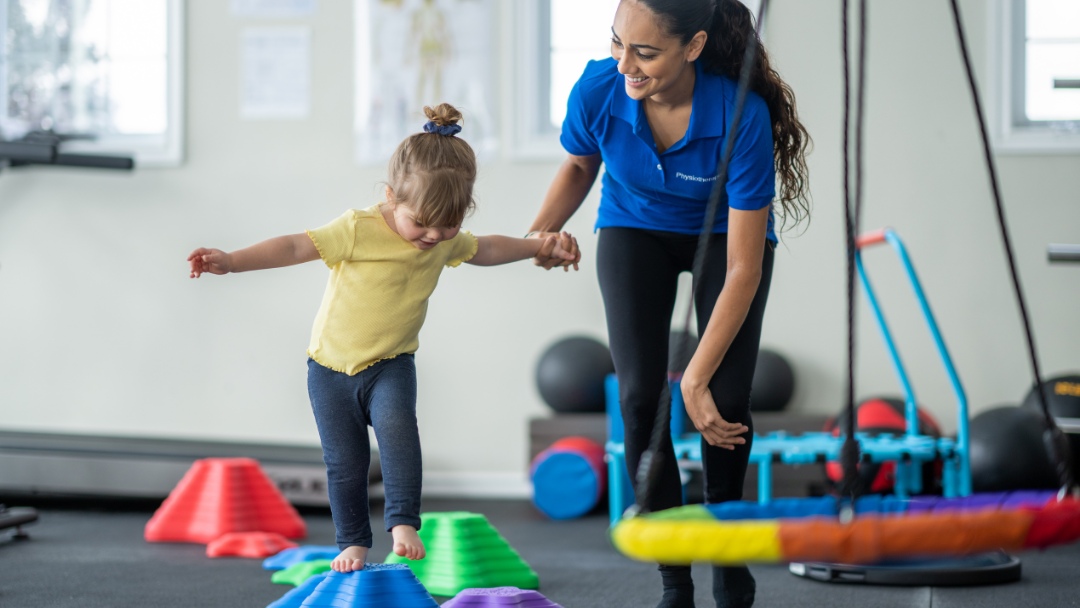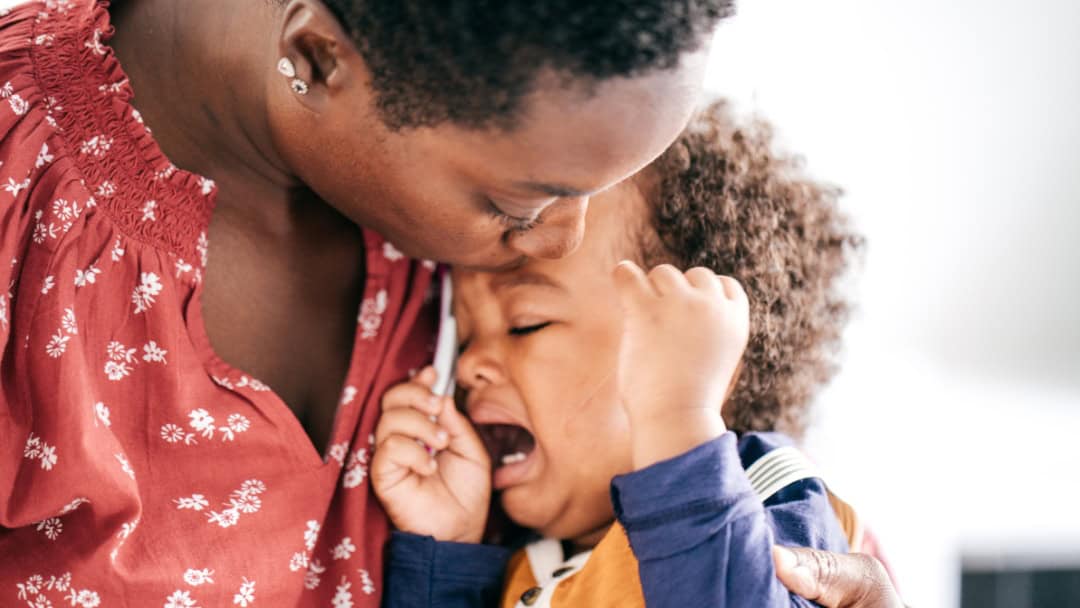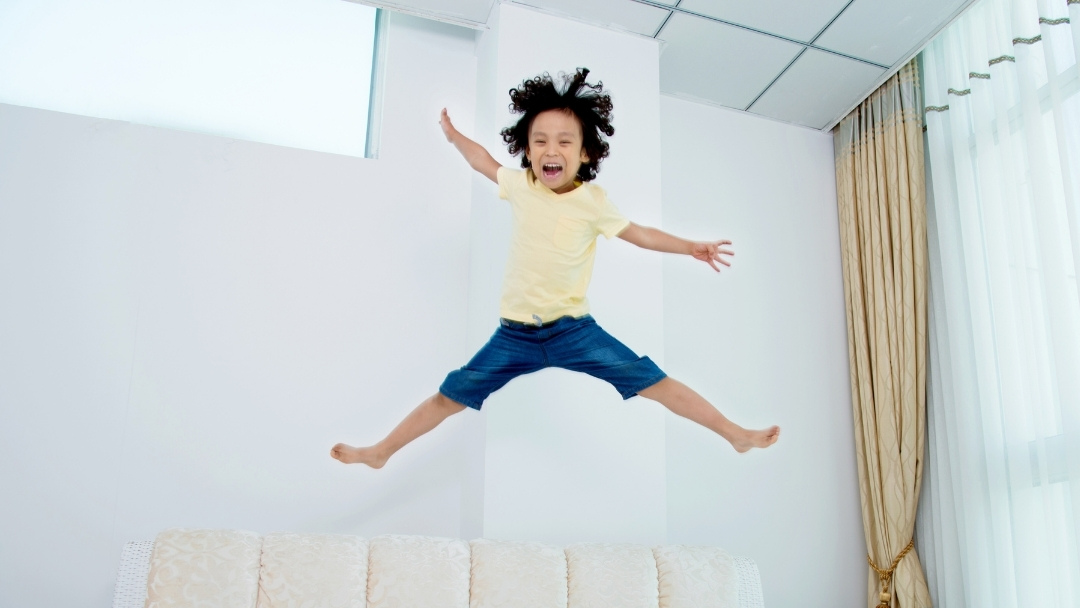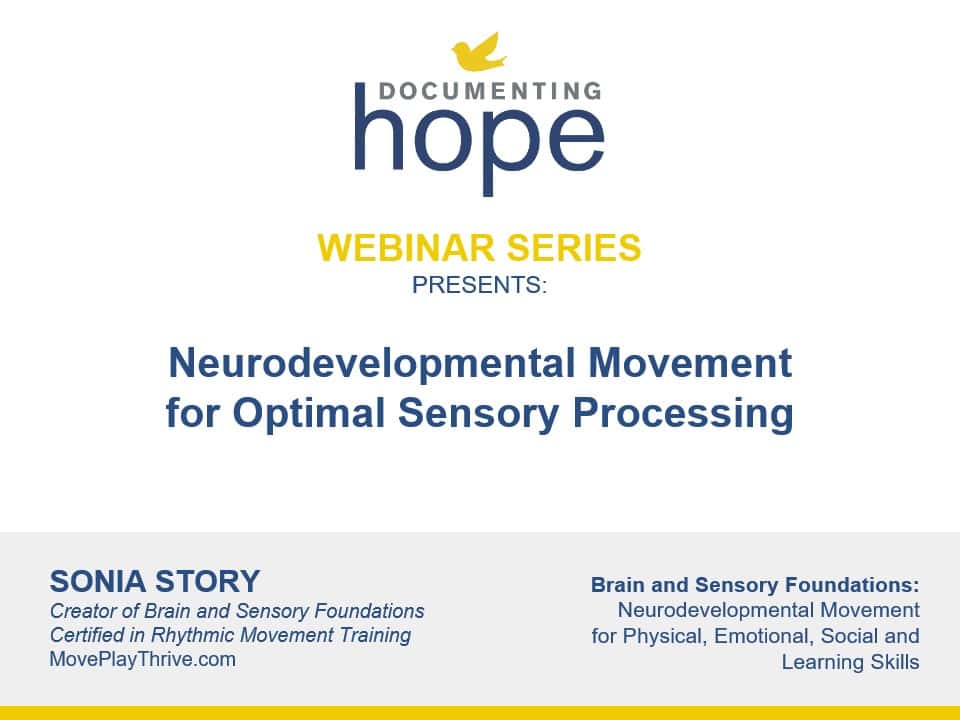What Is the Moro Reflex?
The Moro reflex, often referred to as the “startle reflex,” is one of the many primal/primitive reflexes present in infants from before birth. It is a physical reaction to sudden stimuli in a baby’s environment—most frequently a response to sound or movement. For example, when an infant is laid down suddenly or hears a loud noise, you might observe their arms and legs quickly extending outward before retracting in, almost as if they’re trying to cling to their caregiver.
This response isn’t just about movement; there’s often an emotional component as well. The startled baby may let out a cry after being surprised. This sudden outburst—both physical and vocal—isn’t random. The Moro reflex serves the vital purpose of alerting a caregiver to potential danger or distress. When an infant is startled, the response is powerful enough to prompt quick action from those nearby, helping to keep the baby safe and secure.
The Moro reflex triggers a release of stress hormones such as cortisol throughout the baby’s body, pushing them into a classic “fight, flight, or freeze” state. These chemicals heighten alertness and readiness for action in response to danger, even though the “danger” might be as innocuous as a gentle shift in the child’s position. Once the caregiver reassures and comforts the infant, those stress hormones dissipate, and the baby returns to a calm state.
Typical Timeline of Development of the Moro Reflex
The Moro reflex follows a fairly predictable developmental path in human growth. This reflex develops in utero and remains active for about the first six months of life. In a typically developing baby, it is integrated at that time into a more sophisticated startle response that does not involve the dramatic limb extension seen in newborns. As integration occurs, the baby’s nervous system gradually replaces this automatic, whole-body reaction with more controlled, higher-level nervous system responses.
What Symptoms Appear If the Moro Reflex Is Retained?
If, however, the Moro reflex persists beyond this integration window, it may signal that the reflex has not fully resolved—what clinicians call a “retained” reflex. Monitoring the timeline and development of this reflex, therefore, is an important part of early pediatric assessment for occupational therapists, pediatricians, and parents alike.
Most infants move on from the Moro reflex as designed. But sometimes, this reflex becomes retained, continuing to affect children well past the typical integration period. Instead of looking like a baby’s startle, a retained Moro reflex manifests in different ways in older children and adults. The following symptoms suggest a retained Moro reflex:
Anxiety and Heightened Stress Response
If an older child experiences chronic anxiety across a variety of routines and environments, this may be a sign that the Moro reflex is still present. Children with a retained Moro reflex can feel on edge, hypersensitive to stimuli, and constantly ready for “fight or flight,” a state not appropriate for day-to-day life outside the context of real danger.
With the Moro reflex closely tied to the body’s stress response, some children who retain it may experience challenges such as blood-sugar dysregulation, sensitivities (including food or environmental), or other signs of a system working harder to stay regulated. These experiences are influenced by many factors, and the retained reflex is one aspect to consider within a larger health and developmental context.
Emotional Regulation Difficulties
A second marker is difficulty with emotional regulation. Children may seem emotionally “hot and cold,” swinging quickly between moods and struggling to maintain a calm emotional state. The reflex’s original purpose—to jolt the baby into alertness in response to sudden change—means that if it persists, the child may be perpetually on alert, unable to settle or self-soothe easily. This emotional turbulence can affect relationships, learning, and general well-being.
Motion Sickness
A pronounced tendency towards motion sickness is common in chidlren and adults with a retained Moro reflex. Those who have it often get carsick very quickly or find themselves nauseous during even mild movement activities, like riding a Ferris wheel, swinging on a swing, or riding a merry-go-round. The underlying reason is a disconnect in how the body perceives and adjusts to changes in motion—originally triggered during the dramatic limb-extension of the Moro response—due to a dysregulated vestibular system.
Balance and Coordination Issues
Apraxia and dyspraxia are balance and coordination challenges that often accompany a retained Moro reflex. Since the Moro reflex originally impacts the whole-body reaction to movement, its persistence can prevent the development of smooth, coordinated control required for activities that demand balance and postural stability. Postural control is often difficult, resulting in children who appear “disconnected” in their body’s movement patterns.
Other Potential Signs
Other associated issues of a retained Moro reflex include:
- Hypersensitivity to lights and sounds
- Chronic distractibility
- Trouble with attention and focus
- Difficulty in social settings
It is very common for a child with a neurodevelopmental disorder such as autism, ADHD, learning disabilities, developmental delays and Sensory Processing Disorder to have a retained Moro reflex and quite likely many other retained reflexes.
What Causes a Retained Moro Reflex?
We encourage you to read the section entitled Regression of Milestones in our Developmental Delays Main Info Page as well as the section entitled What Can Pause, Impair, or Interrupt Brain Development? in our How a Child’s Brain Develops article for detailed information. The retention of the Moro reflex can be due to birth trauma, environmental toxins, head injury, chronic ear infections, significant illness, or other early developmental disruptions. It’s often a combination of influences rather than a single cause.
What Can Be Done for a Retained Moro Reflex?
Addressing a retained Moro reflex is both possible and beneficial, especially when individualized, functional activities are used. An occupational therapist who is knowledgeable about reflex integration will typically encourage practical approaches that engage the child in active movement and sensory experiences. Please note that not all occupational therapists have this kind of training.
Functional Exercises for Integration
Here are a couple of examples of exercises that a therapist might use to help your child integrate their retained Moro reflex. Keep in mind these exercises should be done in a safe and supported environment, as moving too quickly or without care, may exaggerate, rather than integrate, the startle response. One example is a “head-tilting” exercise while lying on a bed. Starting with the child’s head hanging off the edge of the bed, he or she will be encouraged to lift, then lower the head to a slow count of eight (approximately 8 beats of a metronome set at 60 beats per minute). The child then alternates positions, completing the pattern on the left side, right side, back and tummy.
Another example involves the use of a yoga, or therapy, ball. The child may be positioned on their stomach or back over the ball (gently supported by their caregiver or therapist as needed). He or she is then encouraged to reach for and grab a toy—such as a bean bag or stuffed animal. After retrieving the object, they are then given the opportunity to return comfortably to a safe, seated position and toss the toy toward a target. The critical element in these exercises is the change in head position as the child lies over the ball or bed. The purposeful movement stimulates the vestibular system and directly engages the neurological circuits associated with the Moro reflex. It helps the nervous system learn to process motion in a new, mature way, encouraging the integration of the reflex and helping to reverse signs and symptoms associated with reflex retention.
Tips for Implementing Integration Activities
Feelings of safety and support are critical. If the child is apprehensive about going backward over the ball or bed, or if they become noticeably fearful if their feet leave the ground, provide extra stability. Caregivers should always stabilize the child’s legs and offer support, making the exercise both a nurturing and therapeutic experience. Hesitancy or discomfort with the movement can be telling; it may indicate that the Moro reflex is significantly retained and impacting the child’s day-to-day function.
It’s important to remember that these activities are not diagnostic tools but an integrative exercise. Formal assessment for retained reflexes should always be conducted in person with an experienced professional, such as an occupational therapist who has knowledge of and training for dealing with reflex integration. We may have someone in your area listed in our practitioner directory, and you can also find help from telehealth therapy providers such as Brain Harmony and MovePlayThrive.
Other Tips for Those with a Retained Moro Reflex
There are many ways to help calm the fight–flight-or-freeze response common to those with a retained Moro reflex. In addition to finding a therapist that can help integrate the reflex, as mentioned above, anything you can do to create a sense of calm for your child will help. Always remember that the body cannot heal unless it is in a state of calm, so find those things that can help get your child into this state, whether it’s a practice of gratitude, getting into nature, doing breathwork, having acupuncture done, having chiropractic or craniosacral therapy work done, doing heavy work or many of the other mind-body-spirit therapies. There are many choices out there, and many of them are free. We also encourage you to do these things for yourself because you being in a state of calm will also help your child to heal.
The Importance of Individualized Support
Because every child is different, there is no universal intervention. Some children may benefit from daily movement games, structured therapy sessions, or even classroom sensory breaks based on their unique needs and developmental stage. The goal is always to make integration exercises functional and fun—ensuring that the learning and neurological adaptation occur in a motivating, positive context.
Conclusion
The Moro reflex is a critical milestone in early childhood development, providing necessary protection and alertness during the newborn stage. Typically, it fades by six months as more sophisticated neurological responses take over. When it persists—becoming a retained reflex—it can lead to anxiety, emotional dysregulation, motion sickness, and coordination problems. Through thoughtful, functional activities and close observation, parents and professionals can both ease the reflex’s effects and help children reach their full potential. Advances in occupational therapy and parent education are making it easier than ever to recognize, assess, and integrate the Moro reflex, ensuring every child gets the best possible start.
About Maria Rickert Hong CHHC
Maria Rickert Hong is a Co-Founder of, and the Education and Media Director for, Documenting Hope.
She is a former sell-side Wall Street equity research analyst who covered the oil services sector at Salomon Smith Barney and Lehman Brothers under Institutional Investor #1 ranked analysts.
Later, she covered the gaming, lodging & leisure sector at Jefferies & Co. and Calyon Securities. She quit working on Wall Street when her first son was born.

Prior to working on Wall Street, she was a marketing specialist for Halliburton in New Orleans, where she also received her MBA in Finance & Strategy from Tulane University.
She is the author of the bestselling book Almost Autism: Recovering Children from Sensory Processing Disorder and the co-author of Brain Under Attack: A Resource for Parents and Caregivers of Children with PANS, PANDAS, and Autoimmune Encephalitis. She is a co-author of Reversal of Autism Symptoms among Dizygotic Twins through a Personalized Lifestyle and Environmental Modification Approach: A Case Report and Review of the Literature, J. Pers. Med. 2024, 14(6), 641.
Maria is also a Certified Holistic Health Counselor. Her work can be found on DocumentingHope.com, Healing.DocumentingHope.com, Conference.DocumentingHope.com and MariaRickertHong.com
Still Looking for Answers?
Visit the Documenting Hope Practitioner Directory to find a practitioner near you.
Join us inside our online membership community for parents, Healing Together, where you’ll find even more healing resources, expert guidance, and a community to support you every step of your child’s healing journey.
Sources & References
Adolph, K.E., et al. Learning to crawl. Child Dev. 1998 Oct;69(5):1299-312.
Amos, P. Rhythm and timing in autism: learning to dance. Front Integr Neurosci. 2013 Apr 19;7:27.
Akhmatova, N.K., et al. Influence of MNRI on the Immune Status of Children with Down Syndrome. Journal of Clinical & Cellular Immunology. 8 (2017): 1-8.
Barnhill, E. Neural connectivity, music, and movement: a response to Pat Amos. Front Integr Neurosci. 2013 Apr 24;7:29.
Bell, C., et al. The Effect of the MNRI Method on Neurotransmitter Biomarkers of Individuals with Neurodevelopmental Disorders. Neuroscience and Medicine. 2019.
Cho, H., et al. Effects of Action Observation Training with Auditory Stimulation on Static and Dynamic Balance in Chronic Stroke Patients. J Stroke Cerebrovasc Dis. 2020 May;29(5):104775.
Deiss, T., et al. Physiological Markers and Reflex Pattern Progression in Individuals with Neurodevelopmental Deficits Utilizing the MNRI Method. Neuroscience and Medicine. 2019.
Dumuids-Vernet , M.V., et al. Stimulating the motor development of very premature infants: effects of early crawling training on a mini-skateboard. Front Pediatr. 2023 Jun 6:11:1198016.
Gajewska, E., et al. Crawl Position Depends on Specific Earlier Motor Skills. J Clin Med. 2021 Nov 29;10(23):5605.
Goddard Blythe S. Are Immature Neuromotor Skills Significant Factors in Educational Under-achievement and Special Educational Needs? Literature review of the role of Primitive Reflexes as Indicators and Measures of Neuromotor Immaturity. Special School. (2023);LXXXIV(2):111-123.
Grigg. T.M., et al. Primitive Reflex Integration and Reading Achievement in the Classroom. Journal of Neurology and Experimental Neuroscience. 2023; 9(1), 18-26.
Grigg, T.M., et al. Retained primitive reflexes: Perceptions of parents who have used Rhythmic Movement Training with their children. J Child Health Care. 2018 Sep;22(3):406-418.
Grzywniak, C. Integration exercise programme for children with learning difficulties who have preserved vestigial primitive reflexes. Acta Neuropsychologica. 2017;15(3).
Hardy, M.W., et al. Rhythm, movement, and autism: using rhythmic rehabilitation research as a model for autism. Front Integr Neurosci. 2013 Mar 28;7:19.
Herbert, J., et al. Crawling is associated with more flexible memory retrieval by 9-month-old infants. Dev Sci. 2007 Mar;10(2):183-9.
Hong, H.J., et al. Effect of Rhythmic Movement Program to Improve Walking Ability for Elderly Patients with Stroke. Indian Journal of Science and Technology. 2016 Jul;9(26).
Iverson, J.M. Developing language in a developing body: the relationship between motor development and language development. J Child Lang. 2010 Mar;37(2):229-61.
Jordan-Black, J. The effects of the Primary Movement programme on the academic performance of children attending ordinary primary school. Journal of Research in Special Educational Needs. 2005 Nov;5(3):101 – 111.
Kadivar, Z., et al. Effect of step training and rhythmic auditory stimulation on functional performance in Parkinson patients. Neurorehabil Neural Repair. 2011 Sep;25(7):626-35.
Khan, Z., et al. Slow CCL2-dependent translocation of biopersistent particles from muscle to brain. BMC Med. 2013 Apr 4:11:99.
Ladányi, K. et al. Is atypical rhythm a risk factor for developmental speech and language disorders? Wiley Interdiscip Rev Cogn Sci. 2020 Sep;11(5):e1528.
Lakatos, P., et al. A New Unifying Account of the Roles of Neuronal Entrainment. Curr Biol. 2019 Sep 23;29(18):R890-R905.
Masgutova, S., et al. Effect of the MNRI Reflex Neuromodulation on the QEEG and Neurotransmitters of Children Diagnosed with Cerebral Palsy. 2020.
Masgutova, S., et al. Effects of MNRI Visual Reflex Neuro-Training on Visual and Academic Skills of Children with Autism. International Journal of School and Cognitive Psychology 05 (2018): 1-15.
Masgutova, S. Post-Trauma Recovery in Children of Newtown, CT using MNRI Reflex Integration. Journal of
Traumatic Stress Disorders & Treatment. 5(5) 2017.
Masgutova, S., et al. Reflex Profile of Children with Down Syndrome Improvement of Neurosensorimotor Development Using the MNRI® Reflex Integration Program. International Journal of Neurorehabilitation. 3 (2016): 1-9.
Masgutova, S., et al. Progress with Neurosensorimotor Reflex Integration for Children with Autism Spectrum Disorder. 2016.
Masgutova, S. Reflex Integration Disorder as a New Treatment Paradigm for Children with Autism. 2015.
McEwan, M.H., et al. Early infant crawling experience is reflected in later motor skill development. Percept Mot Skills. 1991 Feb;72(1):75-9.
McWhirter, K., et al. The association between learning disorders, motor function, and primitive reflexes in pre-school children: A systematic review. J Child Health Care. 2022 Jul 13;13674935221114187.
Melillo, R., et al. Persistent Childhood Primitive Reflex Reduction Effects on Cognitive, Sensorimotor, and Academic Performance in ADHD. Front Public Health. 2020 Nov 17;8:431835.
Mohamed, M.A., et al. Sensory integration versus Masgutova neuro-sensorimotor reflex integration program on controlling primitive reflexes and gross motor abilities in children with diplegic cerebral palsy. Physiother Res Int. 2023 Jun 29;e2030.
Nowak, K., et al. Evaluation of the Therapeutic Effect of MNRI Reflex Neuromodulation on Children Diagnosed with Autism Based on Reflex Assessments, QEEG Analysis and ATEC Questionnaire. 2020.
Pilecki, W., et al. The impact of rehabilitation carried out using the Masgutova Neurosensorimotor Reflex Integration method in children with cerebral palsy on the results of brain stem auditory potential examinations. Adv Clin Exp Med. 2012 May-Jun;21(3):363-71.
Schmidt, N.B., et al. Exploring human freeze responses to a threat stressor. J Behav Ther Exp Psychiatry. 2008 Sep;39(3):292-304.
Stephens-Sarlós, E., et al. Changes in primitive reflexes in older adults and their relationship to mental health indices: An experimental investigation. Exp Gerontol. 2024 Oct 15:196:112583.
Stephens-Sarlós, E., et al. The efficacy of the sensorimotor training program on sensorimotor development, auditory and visual skills of schoolchildren aged 5–8 years. Child & Youth Care Forum. 2024 Aug;54(2):323-352.
Stephens-Sarlós, E. The relationship between primitive reflex profile and development of vestibular maturity in early school years. Exercise and Quality of Life Journal (2024) 16(2): 11-16.
Suh, J.H., et al. Effect of rhythmic auditory stimulation on gait and balance in hemiplegic stroke patients. NeuroRehabilitation. 2014;34(1):193-9.
Tatarinova, T.V., et al. The Impact of MNRI Therapy on the Levels of Neurotransmitters Associated with Inflammatory Processes. Int J Mol Sci. 2020 Feb 18;21(4):1358.
Teitelbaum, P., et al. Movement analysis in infancy may be useful for early diagnosis of autism. Proc Natl Acad Sci U S A. 1998 Nov 10;95(23):13982-7.
Teitelbaum, P., et al. Reflexes gone astray in autism in infancy. Journal of Developmental and Learning Disorders, 2003;6, 15-22.
Van Hirtum, T., et al. Is atypical rhythm a riskfactor for developmental speech and language disorders? J Assoc Res Otolaryngol. 2021 Jul;22(4):465-480.
Winkler, I., et al. Newborn infants detect the beat in music. Proc Natl Acad Sci U S A. 2009 Feb 17;106(7):2468-71.
Xiong, Q.L., et al. Measurement and Analysis of Human Infant Crawling for Rehabilitation: A Narrative Review. Front Neurol. 2021 Oct 11:12:731374.
Zaigham, M., et al. Prelabour caesarean section and neurodevelopmental outcome at 4 and 12 months of age: an observational study. BMC Pregnancy and Childbirth. 2020 (20)564.
Zentner, M., et al. Rhythmic engagement with music in infancy. Proc Natl Acad Sci U S A. 2010 Mar 30;107(13):5768-73.
Resources
Articles
Gazca, M. Rebooting Development with a Rhythmic Motor Intervention for Children. Minneapolis: St. Catherine University, May 2012.
Move, Play, Thrive: Vision Doctor on Rhythmic Movements + Research about Visual Processing Issues.
Svetlana Masgutova Educational Institute: What can make reflexes dysfunctional.
Books
Blomberg MD, Harald and Dempsey, Moira. Movements That Heal, Rhythmic Movement Training and Primitive Reflex Integration. Independenly published, 2011.
Brandes, Bonnie. The Symphony of Reflexes: Interventions for Human Development, Autism, ADHD, CP, and Other Neurological Disorders. CreateSpace Independent Publishing Platform, 2016.
Carr, Kathryn. The Depth of Her Touch: A Biography of Svetlana Masgutova, PhD, Creator of the MNRI® Reflex Integration Program. Svetlana Masgutova Educational Institute. September 1, 2023.
A Collective Work. Reflexes: Portal to Neurodevelopment and Learning. Svetlana Masgutova Educational Institute, LLC; First Edition. January 1, 2015.
Dennison, Paul E., et al. Brain Gym: Simple Activities for Whole Brain Learning. Edu Kinesthetics. June 1, 1992.
Goddard Blythe, Sally. The Well Balanced Child: Movement and Early Learning. Hawthorn Press, 2005.
Goddard, Sally. Reflexes, Learning and Behavior, A Window Into the Child’s Mind. Fern Ridge Press, 2005.
Masgutova, Denis, et al. Parents' Guide to MNRI® Masgutova Neurosensorimotor Reflex Integration. Svetlana Masgutova Educational Institute, LLC; First Edition. January 1, 2015.
Masgutova, Svetlana, et al. Autism: Maximize Potential with MNRI® Reflex Integration. Svetlana Masgutova Educational Institute; First Edition. January 1, 2023.
Masgutova, Svetlana, et al. MNRI® Reflex Integration for Your Daily Well-Being. Svetlana Masgutova Educational Institute, LLC. January 1, 2020.
Masgutova, Svetlana, et al. Post Trauma Recovery: Gentle, Rapid, and Effective Treatment with Reflex Integration. 1st World Publishing. January 17, 2018.
Masgutova, Svetlana, et al. Trauma Recovery - You Are A Winner; A New Choice Through Natural Developmental Movements. 1st World Publishing. May 24, 2007.
Websites
Balance Brain Achievement Centers
Institute for Neuro-Physiological Psychology
My Child Will Thrive: Primitive Reflexes Cheat Sheet







